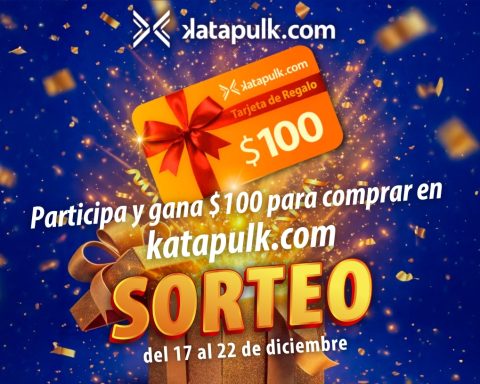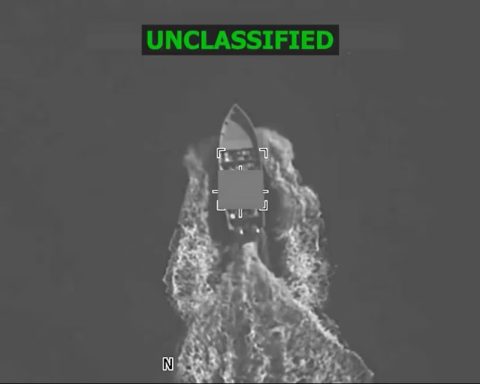Unlike dogs, the number of cats that come to consultation with epileptic seizures is low and much less frequent than in canines.
Epilepsy in cats is a pathology of the Central Nervous System that must be taken into account in the veterinary clinic.
The seizure or excitability crisis that originates in the cerebral cortex corresponds to a cortico-thalamic lesion. The seizures produced by the pathology originate in the cortical cortex and in the subcortex, in the diencephalic or thalamic area.
Convulsive crises in cats are difficult to treat when they are acute, because they can be very frightening to the owner due to their severity.
Today the term “seizure” is rarely used. Instead, they speak of crises or attacks. These crises can be convulsive or non-convulsive. The non-convulsive ones are seen more in the dog, where the patient does not have motor hyperactivity, but instead presents other behavioral phenomena. In general, a non-convulsive seizure is one that does not affect the motor system. On the other hand, seizures can be seen more in cats.
It is possible to speak of epilepsy when two convulsive or non-convulsive crises occur, or even more, for hours or recurring crises, which are repeated in that time. Epilepsy is not a disease as such, but a neurological situation characterized by the repetition of seizures that may or may not be convulsive over time.
Epileptic seizures are those that occur due to a mainly idiopathic phenomenon or of unknown origin, or due to a structural condition of the brain that causes the brain to recurrently convulse.
All the neurobiological phenomena that occur in epilepsy establish a state of cortical hyperexcitability with a large post-synaptic sodium influx. This phenomenon, if not treated or controlled in time and for very long periods of time, causes neuroplastic phenomena to be established in patients that lead to preparing the brain to have these convulsive states over time. That is why they must be treated in a timely and effective way.
The prevalence of epileptic seizures in felines is between 0.5% and .5% and refractoriness is around 30%; the latter is very similar to that of the dog.
Cats generally have a very good response to treatment in general and very few cases are seen becoming refractory or not responding to conventional treatment. When a cat does not respond to conventional treatment, it is probably a structural cause of the brain, not an epilepsy of unknown origin and other elements must be looked at.
Current classification of epilepsy according to its etiology:
Idiopathic epilepsy: It is one that has an unknown origin. So far, in cats it has not been shown that there is a genetic condition that produces this type of epilepsy. Unlike the dog, a species in which it has been shown in some breeds. This type of epilepsy in felines is classified into two groups. One is generalized or diffuse and the other is focused.
Structural epilepsy: what is characteristic of it is that it gives focalized signs. A part of the body convulses because it is mainly structural damage. There are many structural causes that induce this focal epilepsy.
Reactive epilepsy: This type of epilepsy is quite rare in cats, unlike dogs, where it is also very rare, but it does occur. This is due to any extraneurological cause. Mainly if it is a normal brain, which has the ability to tend to excitability due to an extraneurological pathology that can be metabolic, endocrine, etc.
Diagnosis of Idiopathic Epilepsy:
There is a protocol for the diagnostic approach to epilepsy. It is very important to follow the confidence levels of idiopathic epilepsy.
It is common for owners to record the convulsive attacks that occur in their cat and take them to your consultation so that you can see them, this is a very important element to take into account together with a good history and a thorough neurological examination.
But it is also very important to carry out neuroimaging studies, although in our conditions in Cuba it is very difficult.
Confidence levels for idiopathic epilepsy of unknown or possibly genetic origin:
When a patient passes these three confidence levels, it can be said that we are facing a diagnosis of idiopathic epilepsy. It is very important that this protocol is carried out, because it gives us a lot of confidence at the time of diagnosis.
It has always been said that when there are no concomitant signs that accompany epilepsy, it can be said that we are facing idiopathic epilepsy. However, it is known that there are areas of the brain that are silent to extraconvulsive signs.
In Level Type 1, it is taken into account that the animal has had two or more crises separated by 24 hours. The first episode occurs between six months and six years of age.
Between seizures and non-seizures, the patient is neurologically normal, and it is important to perform a detailed neurological examination. In addition, the patient has no clinical or laboratory abnormalities that could explain the seizures.
Level Type 2 is a bit more complex, because tests must be done to evaluate pre and postprandial bile acid levels, which must be normal to rule out liver disorders.
An MRI should also be done indicating that everything is normal. Cat MRI tends to be a bit more complex due to a smaller brain. But if you have doubts, you have to repeat the MRI three or four months after seeing the first one.
Level 2 will end with an examination of the cerebrospinal fluid that should always be performed in patients who have epilepsy.
At Level 3, that’s when an electroencephalogram needs to be done. When this result is normal and is accompanied by the other levels, it can be said that we are dealing with Idiopathic Epilepsy or of unknown origin or apparently of genetic origin.
Diagnosis of Structural Epilepsy:
This type of epilepsy is more complex and the person responsible for the animal is not given good news, because it involves structural injuries.
Various causes within the brain can cause this epilepsy, such as neoplasms, traumas, vascular lesions, inflammatory lesions of infectious origin or developmental abnormalities. These injuries should be confirmed with MRI, cerebrospinal fluid examination, or tests. post-mortem.
In the cat, the main encephalopathies are inflammatory due to infectious causes. Today, cases of immune-mediated encephalitis have already been reported, such as immune-mediated or idiopathic meningoencephalitis. We can speak here of 50% of the causes of epilepsy due to these conditions.
Encephalopathies of degenerative origin occupy it in 15%, which mainly affect the cerebellum, in cats.
Encephalopathies caused by neoplasms account for 13%, which are mainly due to lymphomas or meningiomas. The vast majority of meningiomas are benign and can be operated with a fairly good prognosis in terms of life expectancy.
The rest of the injuries that can be of vascular or congenital origin occupy 22%.
Diagnosis of Reactive Epilepsy:
We had already mentioned that there are different causes of Reactive Epilepsy of metabolic or endocrine origin.
Hypocalcemia, hypoxia, hyperthyroidism, hepatic encephalopathies, hypomagnesemia, uremia, etc. can be mentioned here. All this can cause a brain to have a tendency to seizures.
Feline temporal cortex epilepsy:
This epilepsy is often seen in cats. But there are characteristic signs that can indicate it. They are paroxysmal orofacial crises with head up, salivation, facial spasms, chewing and tongue movements, and licking, which are classic clinical signs in this case.
This type of epilepsy goes through different stages. Unilateral and then bilateral facial twitching may be seen first. In a third stage, head jerks can be seen and then we move on to another stage with a contralateral tournament and spasticity of the contralateral limbs. In stage five chronic seizures can be seen while patients are standing and in the last stage it generalizes to a symmetrical tonic-clonic seizure, which is usually quite severe for the animal owner to witness.
In cats it is very strong to see this type of epilepsy compared to dogs. Cats can run in these cases, climb on curtains, in places they do not normally go or access. They can also get aggressive, hitting objects, it’s very strong. These crises can even last a long time, they are not usually short. It is excessively brutal.
In this type of epilepsy, a differential diagnosis must be carried out where degenerative encephalopathies, malformations, brain tumors, encephalitis or cerebrovascular accidents must be ruled out. Because somehow these causes, when they affect the temporal cortex and the hippocampus, can induce signs very similar to the degenerative phenomenon of temporal epilepsy in cats. In general and unfortunately, it is quite resistant to drugs.
Treatment of epilepsy in cats:
The most efficient drug to treat seizures in cats is Phenobarbital. It is a drug that we use a lot today in our consultations. A dose of 2 to 5 mg per kg of body weight can be used every 12 hours. The effect of Phenobarbital begins 7-10 days after starting treatment. That is why the guardian must be warned that the animal may have a crisis 7 days after starting treatment.
The second maintenance antiepileptic drug in cats is Levetiracetam. It works quite well, but its drawback is that it must be used every 8 hours at a dose of 20mg per kg of weight. Your dose takes effect after 2-3 days. This medicine is eliminated by the kidney. The patient must not have any nephropathy to be able to use it.
In refractory cases, Levetiracetam can be combined with Phenobarbital, but its dose should be increased to 30mg per kg of weight because the latter increases the metabolism of Levetiracetam.
It is very important to give maintenance treatment for epilepsy in cats with the aim of reducing the frequency and intensity of seizures. This does not mean that you will never have seizures again; although in the cat there are more possibilities of definitively eliminating the crises in time. The important thing is to ensure that the severity of the seizures is less than 50% and that the patient does not have seizures for two or three months. The therapeutic achievement is considered adequate if the patient does not have a seizure at that time. If this is not achieved, the possibility of boosting the drugs by giving more than one antiepileptic at the same time must be considered.
Improving the quality of life of the patient and their guardian is something very important. because these crises cause stressful situations for both. Stress can also be an inducer of seizures. Zeal is a proconvulsant element as well. That is why it is suggested to sterilize epileptic patients.
Performing antiepileptic plasma levels is very important whenever it is possible to do so. It should generally be done 30 or 35 days after giving the drug to the patient and then after 45 days, and then determine whether or not to adjust the dose.
Many medications have associated side effects and antiepileptics are not far behind. That is why owners should be warned, but these associated effects are seen more in dogs than in cats. Dermatological conditions are the most frequent. Phenobarbital is very safe in cats.

















